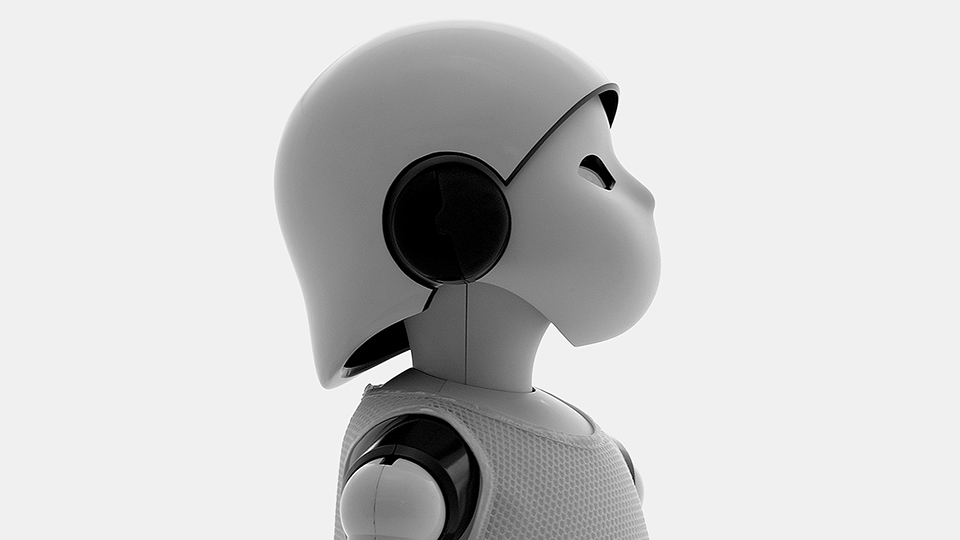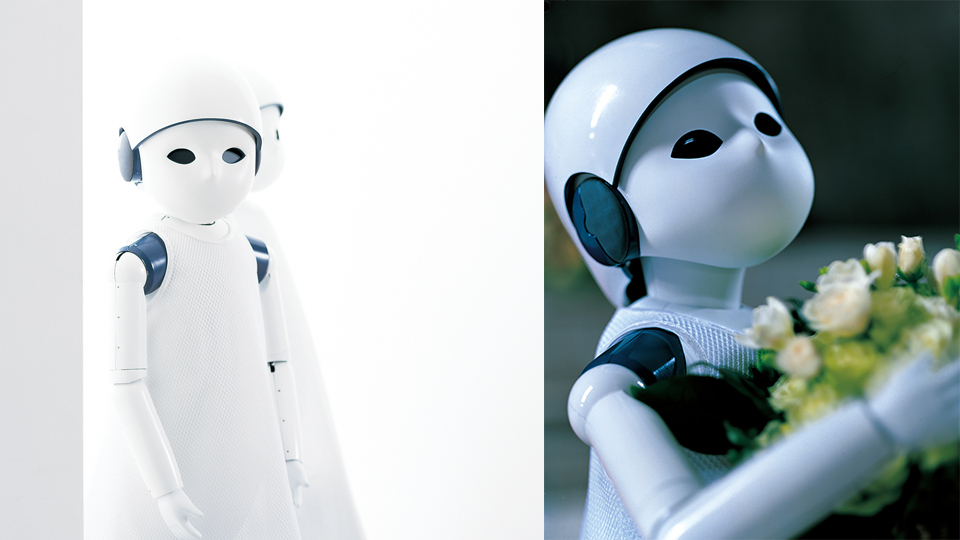Posy
2001
CD:Tatsuya Matsui
CCD: Tatsuya Matsui
D: Tatsuya Matsui, Hiroyuki Hoshino
TC: CENKEN Corporation,CINQ-ART CO.,LTD
P:Masao Okamoto
C:Flower Robotics, Inc., SGI Japan, Ltd.
I visualize a society where human beings and robots live together. I wonder how robots, which are far superior to humans in some of their physical features and mathematical cognition, will come in contact with us.
In order to design a humanoid robot (having its reason for existing), we have to begin with thinking of the environment in which a robot will be in action. To what extent should we think about people who come into contact with a robot, in order to provide a scene where both abilities come close without being incompatible? The conclusion is: robot design at the entrance and the exit is nothing but landscape design. We have to design a new environment where people and robots can communicate with each other.
Shapes conceived by humans have been the most familiar artistic expression since ancient times. Humans have a “fully developed aesthetic sense” for a human shape. Strange or defenseless designs that look out of place are delicate factors in making viewers shut their minds at the moment they look at them. The concept of “Posy” is a flower girl (an icon of an angel who guides a bride-to-be at wedding). What it can do is to walk along a virgin road and to pass flowers. However, “Posy” is capable to express a three-year-old girl’s pure view of the world and completely change the surrounding atmosphere. It is not “Posy” that makes it happen, but viewers are drifting around in their minds. The scene at their spiritual end is the sublime world at which we are looking through a robot. We entrust our ideals for the future to a small body of the first robot made by Flower Robotics, Inc.
In order to design a humanoid robot (having its reason for existing), we have to begin with thinking of the environment in which a robot will be in action. To what extent should we think about people who come into contact with a robot, in order to provide a scene where both abilities come close without being incompatible? The conclusion is: robot design at the entrance and the exit is nothing but landscape design. We have to design a new environment where people and robots can communicate with each other.
Shapes conceived by humans have been the most familiar artistic expression since ancient times. Humans have a “fully developed aesthetic sense” for a human shape. Strange or defenseless designs that look out of place are delicate factors in making viewers shut their minds at the moment they look at them. The concept of “Posy” is a flower girl (an icon of an angel who guides a bride-to-be at wedding). What it can do is to walk along a virgin road and to pass flowers. However, “Posy” is capable to express a three-year-old girl’s pure view of the world and completely change the surrounding atmosphere. It is not “Posy” that makes it happen, but viewers are drifting around in their minds. The scene at their spiritual end is the sublime world at which we are looking through a robot. We entrust our ideals for the future to a small body of the first robot made by Flower Robotics, Inc.


